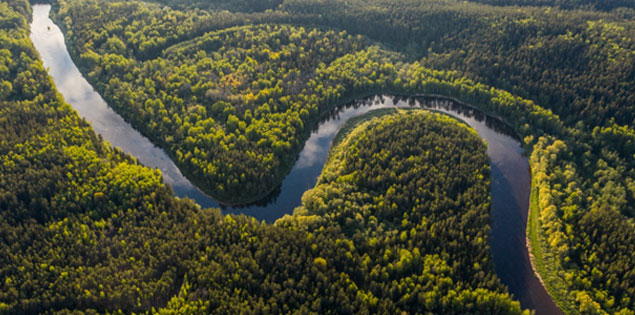The Amazon River Basin is one of Earth’s richest biomes. Spanning across 6.7million square km, the biodiverse ecosystem encompasses the world’s largest rainforest and is home to 20% of the Earth’s biodiversity. Nicknamed the ‘lungs of our planet,’ the Amazon is considered one of the most important biospheres as it plays an integral role in regulating the world’s oxygen and carbon cycles. However, since mass clearing of the forest began in the 1960s, the Amazon has been under threat. Population growth and global consumption have led to rising demands for soy and cattle production which, paired with the Amazon’s low-cost production and lack of secure land governance, increased the clearing of the forest. The detrimental effects of deforestation have led to the destruction of the Amazon’s biodiversity and constrained the rainforest (a natural carbon absorber) from combating CO2 emissions. Today, the Amazon is in a state that is now emitting more CO2 than it absorbs. With the direct link between deforestation and greenhouse gas emission, there is a grave urgency to transition the economically driven management of the Amazon to become more sustainable.
Brazil is highly dependent on the Amazon and its trade and investment of natural resources. However, the current management of those trades have led to a convergence of health, economic, and environmental threats for the country. Preserving one of Earth’s richest biodiversity will not only be essential for the safety of our planet, but also for the future of Brazil’s economy. Currently, many banks, financial institutions, and investors are key stakeholders that either own or provide capital to companies and projects that cause environmental degradation. While the financial sector has been directly and indirectly involved with deforestation of the Amazon in the past, the rising awareness of the climate crisis has quickly moved the industry towards encouraging sustainable development. Over 1,500 international organizations have expressed support in the Task Force on Climate-related Financial Disclosures, a clear signal that investors are seeking greener projects. In order to achieve a climate-friendly economy, actions will need to be taken to promote low-carbon infrastructure, greener investments, the implementation of alternative operations frameworks, and the alignment of Brazilian policies with climate goals. Transitioning the Brazilian economy towards a more sustainable one is estimated to add US $535 billion to the Brazilian GDP by 2030. The financial sector is a constituent part in the bigger picture as it is in a position of power to inspire change. The key for Brazil will be to attract international and private investors that will finance projects in various industries, infrastructures, and agriculture
A long-term solution will take the commitment and collaboration from local governments, civil society, and international actors. An example of one such initiative is the Agroforestry and Restoration Accelerator, a carbon-removal project launched in the Brazilian Amazon. A partnership was formed between The Nature Conservancy, World Agroforestry Centre, and local organizations with the aim to restore and regenerate degraded forest. The objective of reforestation initiative is to create more sustainable sources of income for roughly 3,000 farmers, which, in turn, will result in approximately the removal of 10 million metric tons of CO2 through 2050. Working together across different sectors, the project will help restore degraded pastures to generate alternative sources of income for farmers including the sale of cocoa. Using innovative technology, such as satellite-based AI, the project will explore new methodologies to support more sustainable practices. Investments in projects such as the Agroforestry and Restoration Accelerator nurture sustainable commodities and allow for a business model that provides a win-win solution for all parties involved. Innovation and smart investments are a long-term solution that could allow for the securitization of the Amazon rainforest and the generation of economic flow, while gaining a positive financial return.
Bibliography:
https://wwf.panda.org/discover/knowledge_hub/where_we_work/amazon/about_the_amazon/
https://www.wri.org/insights/going-low-carbon-can-help-brazil-build-back-better

